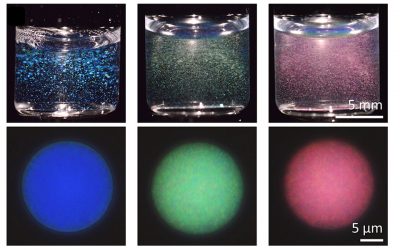With the ongoing desire to create devices and systems at ever increasing speeds, there is great interest in developing technology that operates at terahertz (THz) frequencies (1 THz = 1000 GHz). Plasmonics offers an excellent platform to create such devices, since metals exhibit extremely low loss in this frequency range. Most plasmonic structures are made by using a homogeneous metal film and then patterning it with an appropriate geometry. In order to broaden the operational capabilities of such devices, it would be advantageous to vary the conductivity of the metal film spatially. 
Credit: Photo credit: Dan Hixson, University of Utah College of Engineering.
Using a commercially available desktop inkjet printer equipped with conductive metal ink and resistive carbon ink, rather than the usual color inks, Ajay Nahata and co-workers (University of Utah) demonstrate a silver film with spatially varying conductivity. They examined the effect of this added variation on the beam properties of freely propagating THz radiation. Their results demonstrate that this approach has great potential for creating entirely new families of plasmonic devices.
















